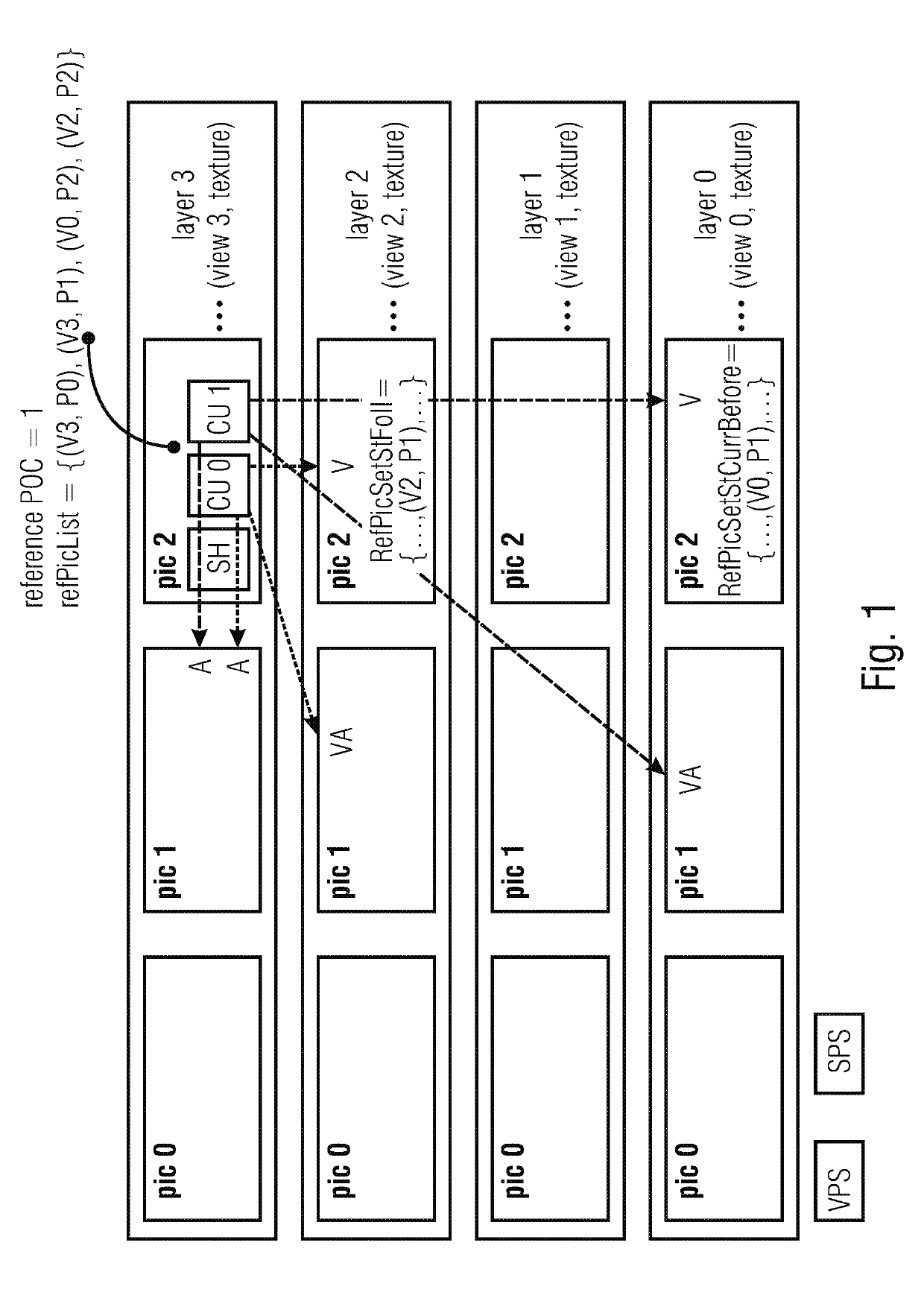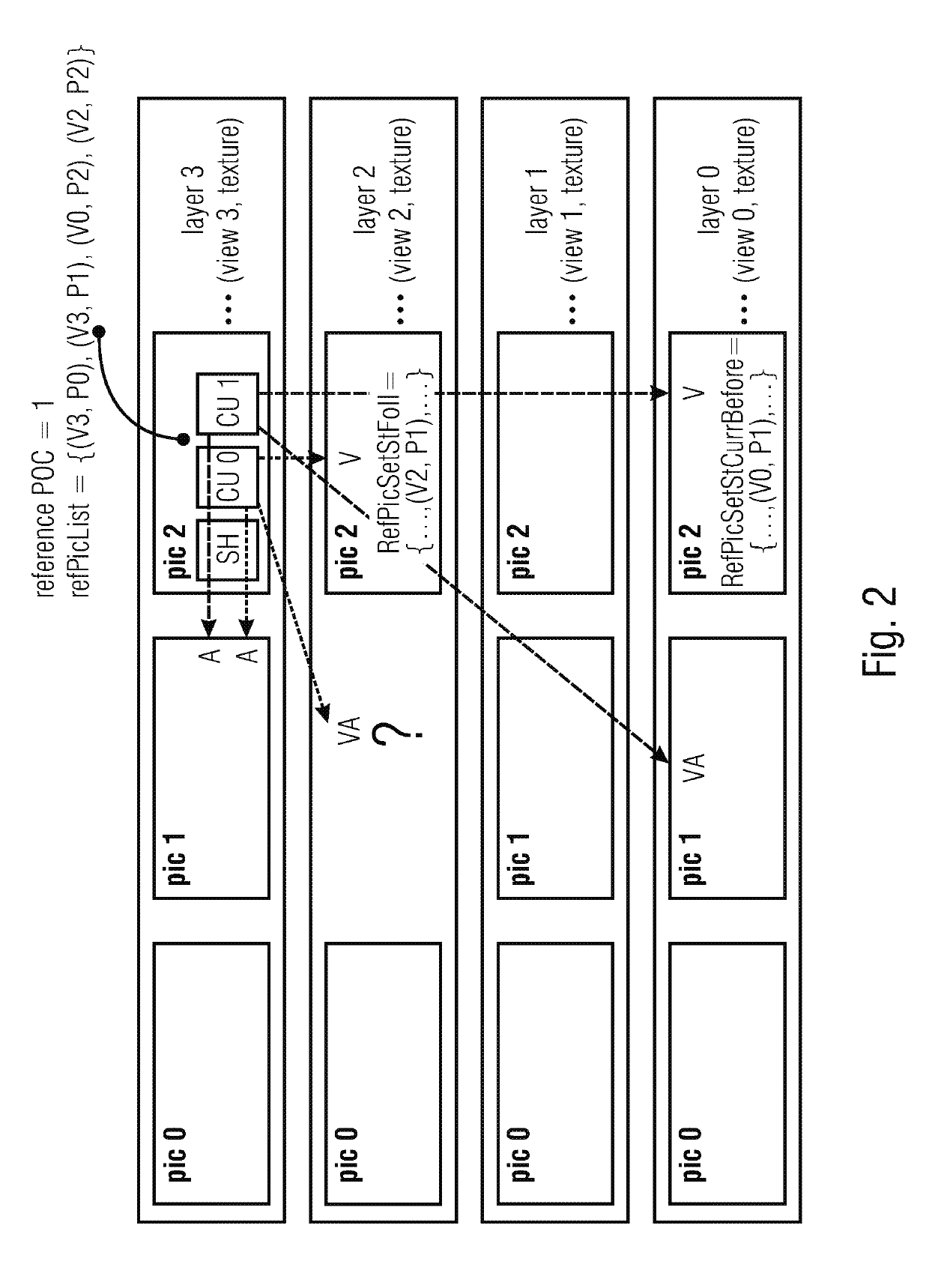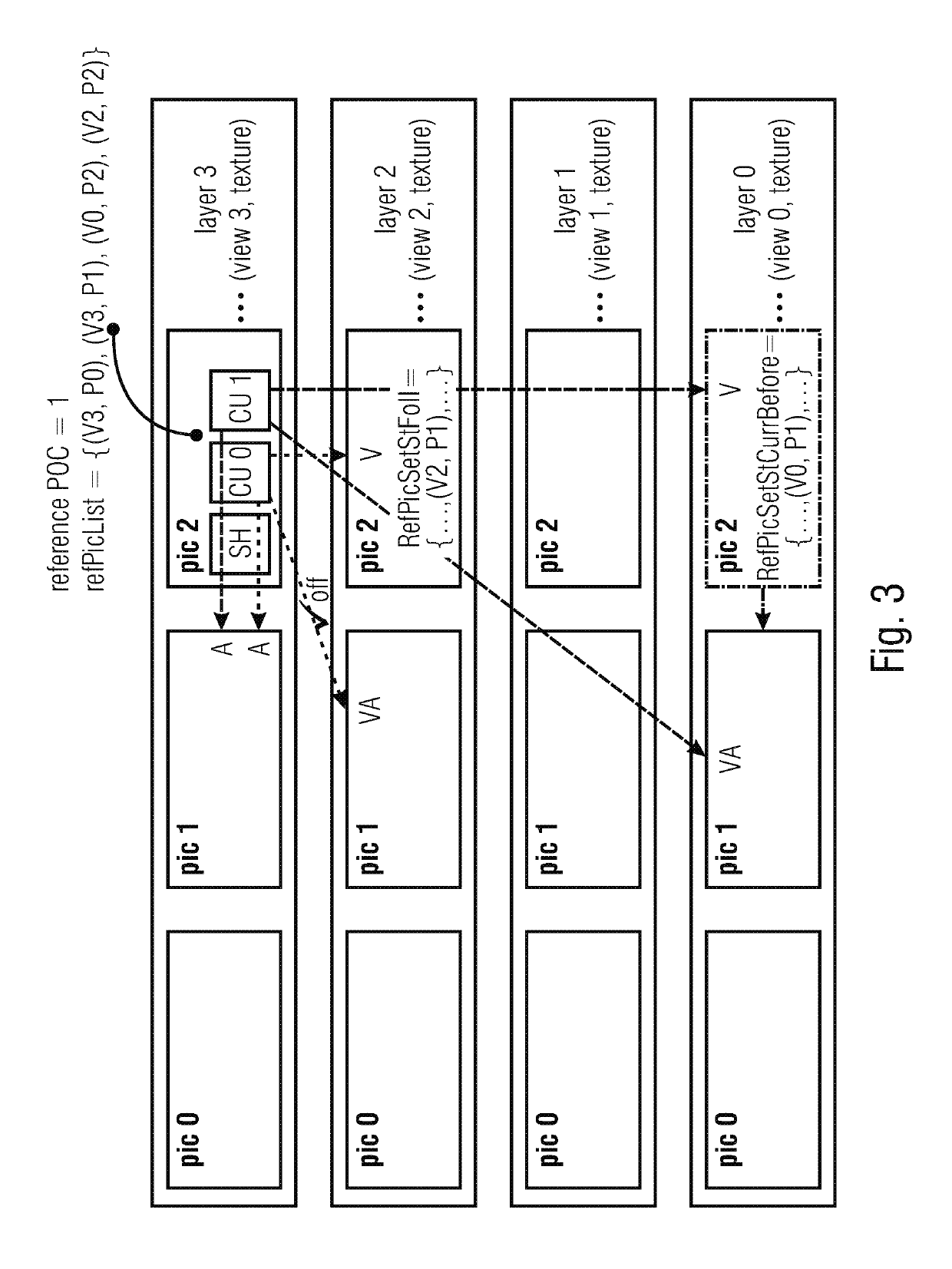Multi-view video codec supporting residual prediction
a video codec and video codec technology, applied in the field of multi-view video codec supporting residual prediction, can solve the problems that the loss of picture va is not necessarily detected, and the decoding of erroneous images cannot be detected, so as to reduce the processing complexity involved and increase the error robustness
- Summary
- Abstract
- Description
- Claims
- Application Information
AI Technical Summary
Benefits of technology
Problems solved by technology
Method used
Image
Examples
Embodiment Construction
[0063]Before describing various embodiments of the present application further below, the thoughts and advantages underlying these embodiments shall be explained by resuming the explanation of problems occurring in the current design of 3D-HEVC of the introductory portion of the specification of the present application and describing, on the basis of the examples described above and shown in FIGS. 1 and 2, solutions which may overcome the problems described.
[0064]An idea in accordance with a first aspect of the present application is to allow a direct detection of a loss of picture VA by enabling residual prediction only, when picture VA it is included in RefPicSetLtCurr, RefPicSetStCurrBefore, or RefPicSetStCurrAfter of picture V. It is a bitstream requirement, that pictures included in these sets are present in the DPB, when decoding picture V. Their presence is conventionally checked when decoding picture V. Thus, the loss of the picture VA would be detected already when decoding...
PUM
 Login to View More
Login to View More Abstract
Description
Claims
Application Information
 Login to View More
Login to View More - R&D
- Intellectual Property
- Life Sciences
- Materials
- Tech Scout
- Unparalleled Data Quality
- Higher Quality Content
- 60% Fewer Hallucinations
Browse by: Latest US Patents, China's latest patents, Technical Efficacy Thesaurus, Application Domain, Technology Topic, Popular Technical Reports.
© 2025 PatSnap. All rights reserved.Legal|Privacy policy|Modern Slavery Act Transparency Statement|Sitemap|About US| Contact US: help@patsnap.com



